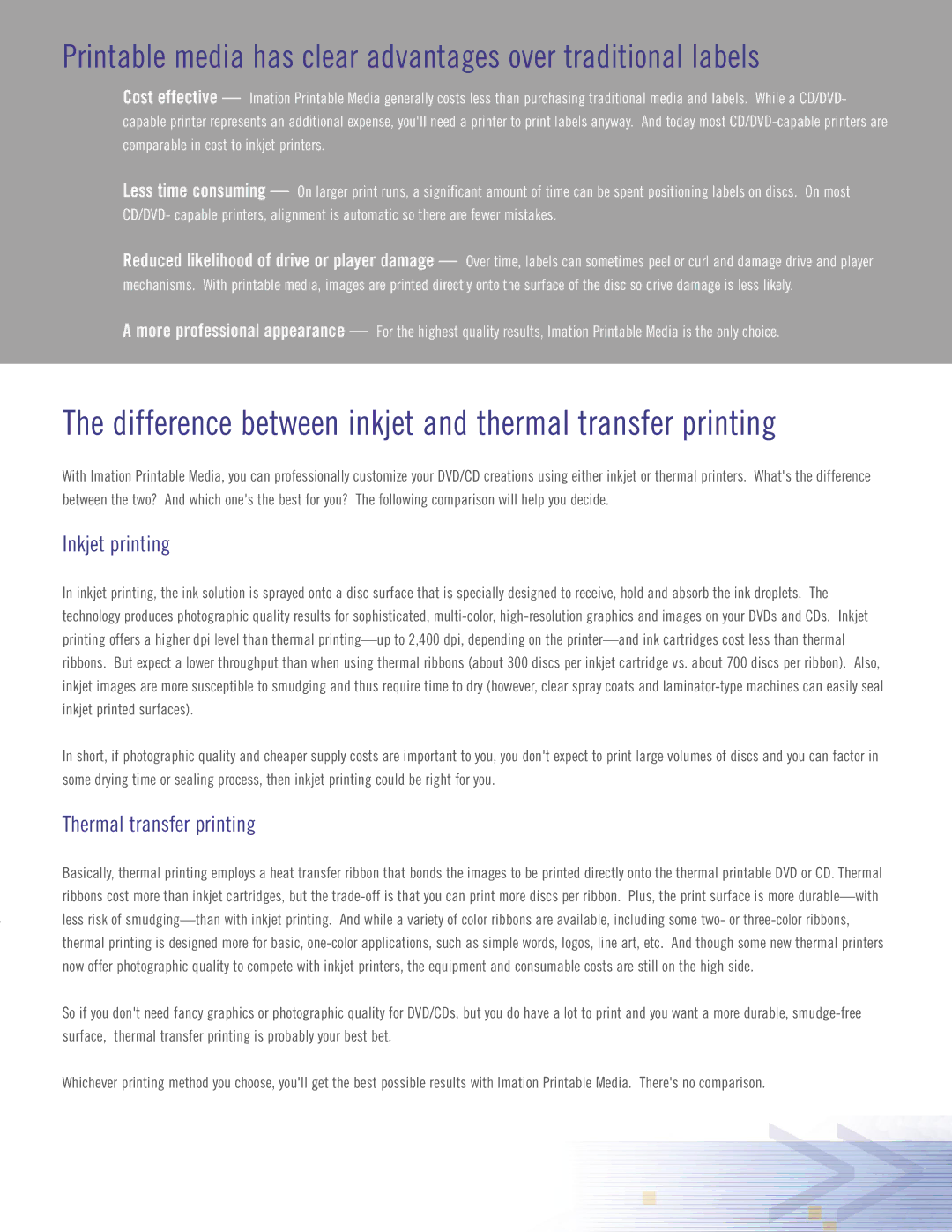
Printable media has clear advantages over traditional labels
Cost effective — Imation Printable Media generally costs less than purchasing traditional media and labels. While a CD/DVD- capable printer represents an additional expense, you'll need a printer to print labels anyway. And today most
Less time consuming — On larger print runs, a significant amount of time can be spent positioning labels on discs. On most CD/DVD- capable printers, alignment is automatic so there are fewer mistakes.
Reduced likelihood of drive or player damage — Over time, labels can sometimes peel or curl and damage drive and player mechanisms. With printable media, images are printed directly onto the surface of the disc so drive damage is less likely.
A more professional appearance — For the highest quality results, Imation Printable Media is the only choice.
The difference between inkjet and thermal transfer printing
With Imation Printable Media, you can professionally customize your DVD/CD creations using either inkjet or thermal printers. What's the difference between the two? And which one's the best for you? The following comparison will help you decide.
Inkjet printing
In inkjet printing, the ink solution is sprayed onto a disc surface that is specially designed to receive, hold and absorb the ink droplets. The technology produces photographic quality results for sophisticated,
In short, if photographic quality and cheaper supply costs are important to you, you don't expect to print large volumes of discs and you can factor in some drying time or sealing process, then inkjet printing could be right for you.
Thermal transfer printing
Basically, thermal printing employs a heat transfer ribbon that bonds the images to be printed directly onto the thermal printable DVD or CD. Thermal ribbons cost more than inkjet cartridges, but the
So if you don't need fancy graphics or photographic quality for DVD/CDs, but you do have a lot to print and you want a more durable,
Whichever printing method you choose, you'll get the best possible results with Imation Printable Media. There's no comparison.
